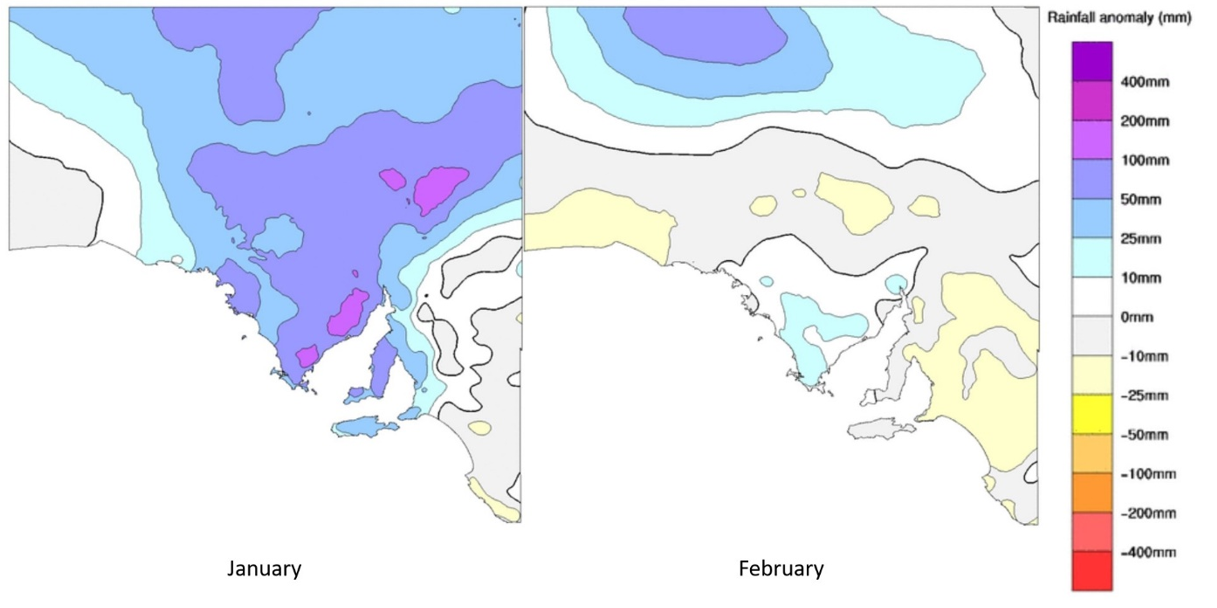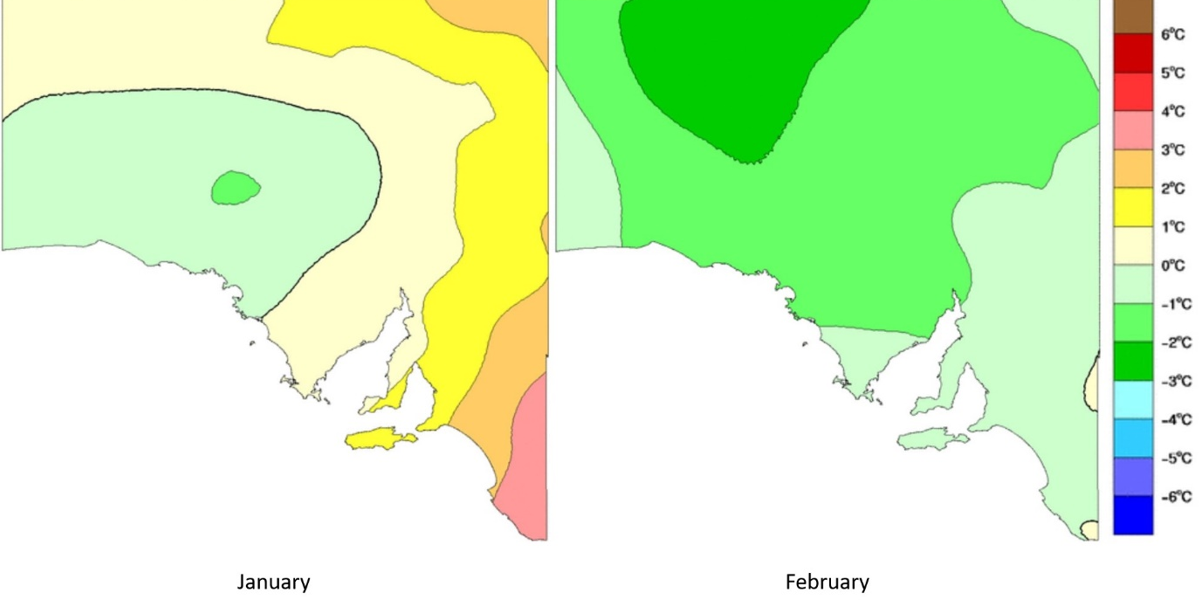PestFacts March 2022

Green bridge risk and management
A number of insect pests, particularly aphids and diamond back moth (PDF) (DBM, Plutella xylostella), and diseases of broadacre agriculture, rely on the availability of host plants (weeds and self-sown crops/volunteers) to survive between growing seasons. This plant material is often referred to as the green bridge. A green bridge commonly grows along roadsides, in water courses, paddock perimeters as well as headlands and any other non-cropped areas of land. The presence and timing of the green bridge is often critical in determining risks of early season pest and disease outbreaks in broadacre crops.
What’s the risk for 2022?
Above average rainfall in January and February (Figure 1) has increased the growth of host plants. Reports from SARDI Entomologists indicate that there’s a substantial green bridge along many roadsides on the Yorke Peninsula. However, temperatures across the state have been below average in February (Figure 2.) and insect development rates are unlikely to have increased compared with a warmer than average year such as 2014.
Currently, these factors suggest a moderate risk. With lots of host plants available invertebrate pests could build up, but development rates will not be accelerated. Local variability and microclimates can affect weed and insect development, so it’s important to monitor this in your area. General assessment may change depending on the weather conditions during autumn. Continue to monitor the green bridge in your area and report your findings to the PestFacts SA team (details below). If there’s lots of green bridge, and you are finding aphids and DBM, controlling the green bridge is the best way to control possible insect pests and diseases.

Figure 1. South Australian mean monthly rainfall anomalies for January and February 2022.

Figure 2. South Australian mean monthly temperature anomalies for January and February 2022
Green bridge management
For effective green bridge management, weeds should be controlled early and ideally well before sowing (at least 4 weeks prior, and for disease management purposes include the time taken for herbicides to achieve complete plant death). Relying solely on herbicides applied at or after sowing will often be too late to prevent movement of pests and/or diseases into emerging crops. Insecticides are not required for control as insects feeding on herbicide treated green bridge will starve as the plants die.
The green bridge can also harbour a range of beneficial insects including ladybird beetles, hoverflies and parasitoid wasps that build up on pest populations. Consider the amount of beneficial insects when deciding to control green bridge. The advent of much cooler weather later in autumn can also dramatically reduce aphid populations.
Resources
- GRDC: Diamondback moth best management practice guide – southern
- GRDC: Early management decisions are key to reducing aphid and virus risk in 2015
- GRDC: Green Bridge Factsheet
- GRDC: Green peach aphid best management practice guide – southern
- GRDC: Resistance Management Strategy for the Green Peach Aphid in Australian Grains
- GRDC Updates Paper 2020: Aphid and insecticide resistance management in grains crops
How to report
Don’t forget to report your findings, both in the green bridge and in general, to the PestFacts SA team via the PestFacts Map online report form. Alternatively, please contact:
Rebecca Hamdorf
Phone: 0429 547 413
Email: rebecca.hamdorf@sa.gov.au
Maarten van Helden
Phone: 0481 544 429
Email: maarten.vanhelden@sa.gov.au


Weed web moth feeding on medic
Weed web moth caterpillars (WWM, Achyra affinitalis) have been reported on feeding medic at Maitland and Port Vincent. WWM is a sporadic and relatively minor pest but has previously been reported in higher numbers in seasons with early autumn rainfall and warm weather.
WWM caterpillars are known to feed on a wide variety of broadleaf plants including canola, soybeans, lupins lucerne, medic and broadleaf weeds. They feed under a fine web, skeletonising foliage and webbing leaves together. With build-up of numbers crop control may be warranted, but they can be useful weed control in early autumn. Check the AVPMA website for registered products – keeping in mind it may be listed under ‘cotton webspinner’ or ‘webspinner caterpillar’.
WWM caterpillars are slender and grow to 15 mm, are grey-green and pale brown in colour, with a distinctive black head. They generally have a dark line down the middle of their back with three rows of dark spots on either side above distinctive cream bands. When disturbed, larvae wriggle violently or crawl around rapidly. Moths are 12 mm long with buff-coloured wings that have darker brown or reddish flecks mainly on the forewings.
Source of reports: Iain Koch, Craig Wissell.


The latest information for growers and advisors on the activity and management of pests in all broadacre crops during the winter growing season.
